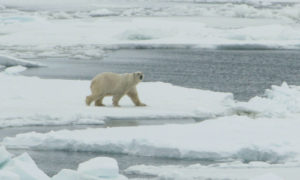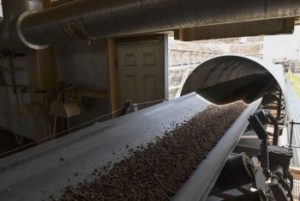by AFP, 18 juin 2019 in ConnaissanceDesEnergies
Total a annoncé mardi qu’il avait commencé à exploiter à Pau son supercalculateur Pangea III, le plus puissant ordinateur du monde dans l’industrie avec une puissance de calcul de 25 petaflops (millions de milliards d’opérations par seconde).
Pangea III est onzième au classement toute catégories des ordinateurs, derrière des machines installées dans de grands centres de recherche aux États-Unis, en Chine, au Japon ou en Europe. Le groupe pétrolier a investi “plusieurs dizaines de millions de dollars” dans ce troisième supercalculateur, a confirmé une source proche du dossier à l’AFP.
La machine porte la puissance de calcul totale du groupe à 31,7 petaflops (soit 170 000 ordinateurs portables). Elle triple sa capacité de stockage à 76 petaoctets (près de 50 millions de films en HD).
…
by European Environment Agency, June 18, 2019
All parts of Europe’s energy system, from availability of energy sources to energy consumption, are potentially vulnerable to climate change and extreme weather events, according to a European Environment Agency report, published today. To secure reliable supply of clean energy, Europe’s energy system needs to adapt and become more climate resilient, the report states.
The EEA assessment ‘Adaptation challenges and opportunities for the European energy system’ analyses the needs for climate change adaptation and climate resilience in Europe’s energy system now and in the future. This assessment supports the clean energy transition, which involves a massive expansion of renewable energy sources, many of which are sensitive to climate factors.
The new assessment warns that climate change and extreme weather events increasingly affect all parts of the European energy system. The most important changes include increases in mean and extreme air and water temperatures, and changes in water availability, extreme climate‑related events, and coastal and marine hazards. These changes will affect the availability of primary energy sources — especially renewable energy sources — as well as the transformation, transmission, distribution and storage of energy, and energy demand.
…
by Polar Bear Science, June 16, 2019
Here we are at the middle of June, when most polar bears are pretty much done with hunting seals for the season. And despite hand-wringing from some quarters, sea ice extent is down only marginally from average at this time of year and certainly not enough to impact polar bear survival.
Given the large expanse of open water in the Southern Beaufort so early in the season, one resident pessimist insists those polar bears are “challenged” by the lack of ice. If he is right, there should be reports of dozens upon dozens of skinny and dying bears along the coast of Alaska this summer. If not, he will pretend he never suggested any such thing.
So far, despite the early loss of ice in some regions, there have been no reports of polar bears ashore unusually early. Hudson Bay still has lots of thick first year ice, so despite the overall reduced Arctic ice coverage, none of the three Hudson Bay polar bear populations are facing the earlier-than-usual sea ice breakup this year as we keep being promised will show up. In fact, there hasn’t been a significantly early breakup in Western Hudson Bay since 2010 (see previous posts here and here).
…

by S. Moore A. & Bridges, June17, 2019 in ClimateChangeDispatch
The recent threats by Beijing to cut off American access to critical mineral imports has many Americans wondering why our politicians have allowed the United States to become so overly-dependent on China for these valued resources in the first place.
Today, the United States is 90 percent dependent on China and Russia for many vital “rare earth minerals.”
The main reason for our over-reliance on nations like China for these minerals is not that we are running out of these resources here at home. The U.S. Mining Association estimates that we have at least $5 trillion of recoverable mineral resources.
The U.S. Geological Survey reports that we still have up to 86 percent or more of key mineral resources like copper and zinc remaining in the ground, waiting to be mined.
These resources aren’t on environmentally sensitive lands, like national parks, but on the millions of acres of federal, state and private lands.
The mining isn’t happening because of extremely prohibitive environmental rules and a permitting process that can take 5-10 years to open a new mine. Green groups simply resist almost all new drilling.
What they may not realize is that the de facto mining prohibitions jeopardize the “Green Energy Revolution” that liberals so desperately are seeking.
How is this for rich irony: To make renewable energy at all technologically plausible, will require massive increases in the supply of rare earth and critical minerals.
…

La géologie, une science plus que passionnante … et diverse


